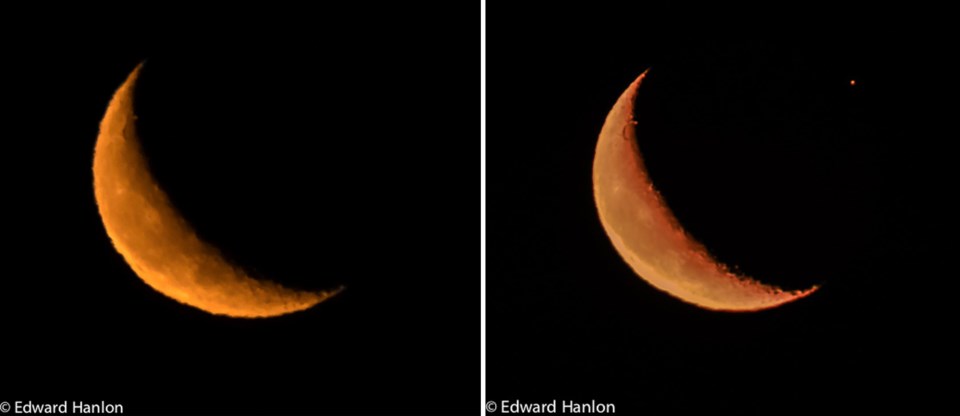Earth is still catching up with the outer planets as we orbit into Spring. March started with the three planets lined up before sunrise in the southeast, from left to right: Saturn, Jupiter and Mars. By the end of the month, Mars had overtaken the other two and it’s now: Mars, Saturn and Jupiter. You can watch Mars pull away from Saturn over the next week or so, still low in the southeast before sunrise.
Venus continues its 2020 “Rock Star” tour after sunset and it continues to be truly spectacular. It is now moving slowly back west toward the Sun and a little north as well. On April 3, Venus will pass just south of the Pleiades star cluster and then will drop down and to the right as it swings between us and the Sun. Because it gets closer to Earth every day it will grow to a larger, thinner crescent; by the 27th it will be 38 arc-seconds in size (about 1/50 of the Moon) and 27 per cent illuminated and will be about as bright as it ever gets.
Any spotting telescope, decent binoculars or even 20/10 vision (I’m told) will show Venus as a crescent – not something you’ll see every day. A bit of trivia: a pair of 8x50 binoculars will give you a much better view than Galileo had with his little scope in 1604 and just think how much trouble that got him into.
The moon is at perigee again – almost as close as in March – the evening of April 7, followed eight hours later by a full moon. That means predicted tide ranges for a few days will be just like March – about 25 per cent larger than normal with a range of almost four metres between high and low. Pretty much the same for May too.
There is also a chance for a bright comet in the summer, Comet C/2019 Y4 ATLAS. At this point it’s somewhere between a long shot and a maybe! This is a new long-period comet coming from waaaay out in the Oort Cloud, like 5,500 years for one orbit! As such it may be pretty much untouched and not cooked to a crisp like some of the short-period ones. It will also pass very close to the Sun: 23 million miles or so, or about half the distance of Mercury’s orbit. However, comets are notoriously hard to predict; some are duds like Kohotek and some are spectacular, like Hale-Bopp in 1997 and McNaught in 2007. This one has potential, however; right now it’s about at the limit of binocular visibility but is brightening.
This and all of the movements of moon and planets described can be seen at: www.heavens-above.com. The Sunshine Coast Centre of the RASC has its website at sunshinecoastastronomy.wordpress.com
While the Covid virus threat persists, our regular meetings are on hold but updates will be posted as they develop.
– By Richard Corbet



